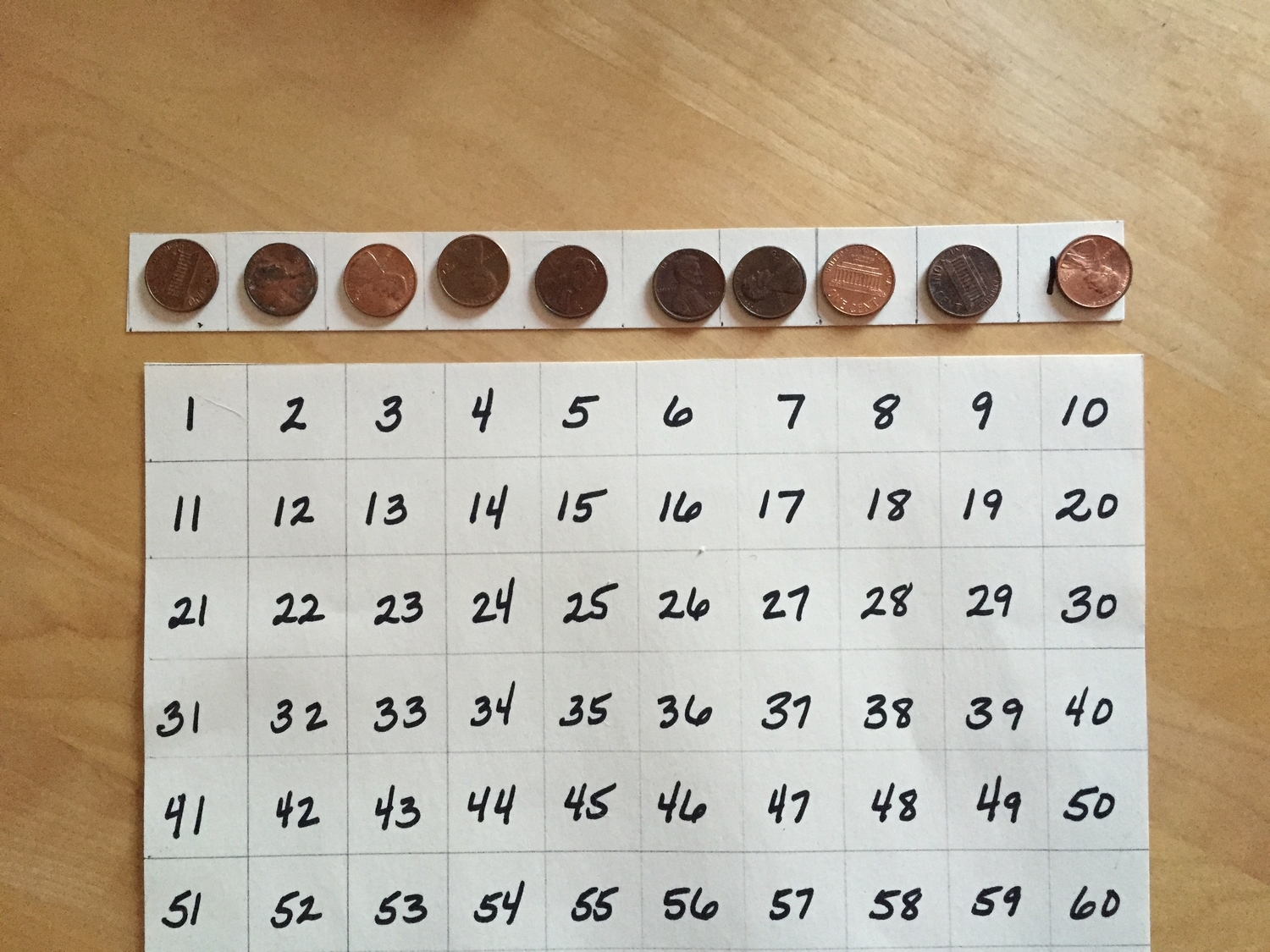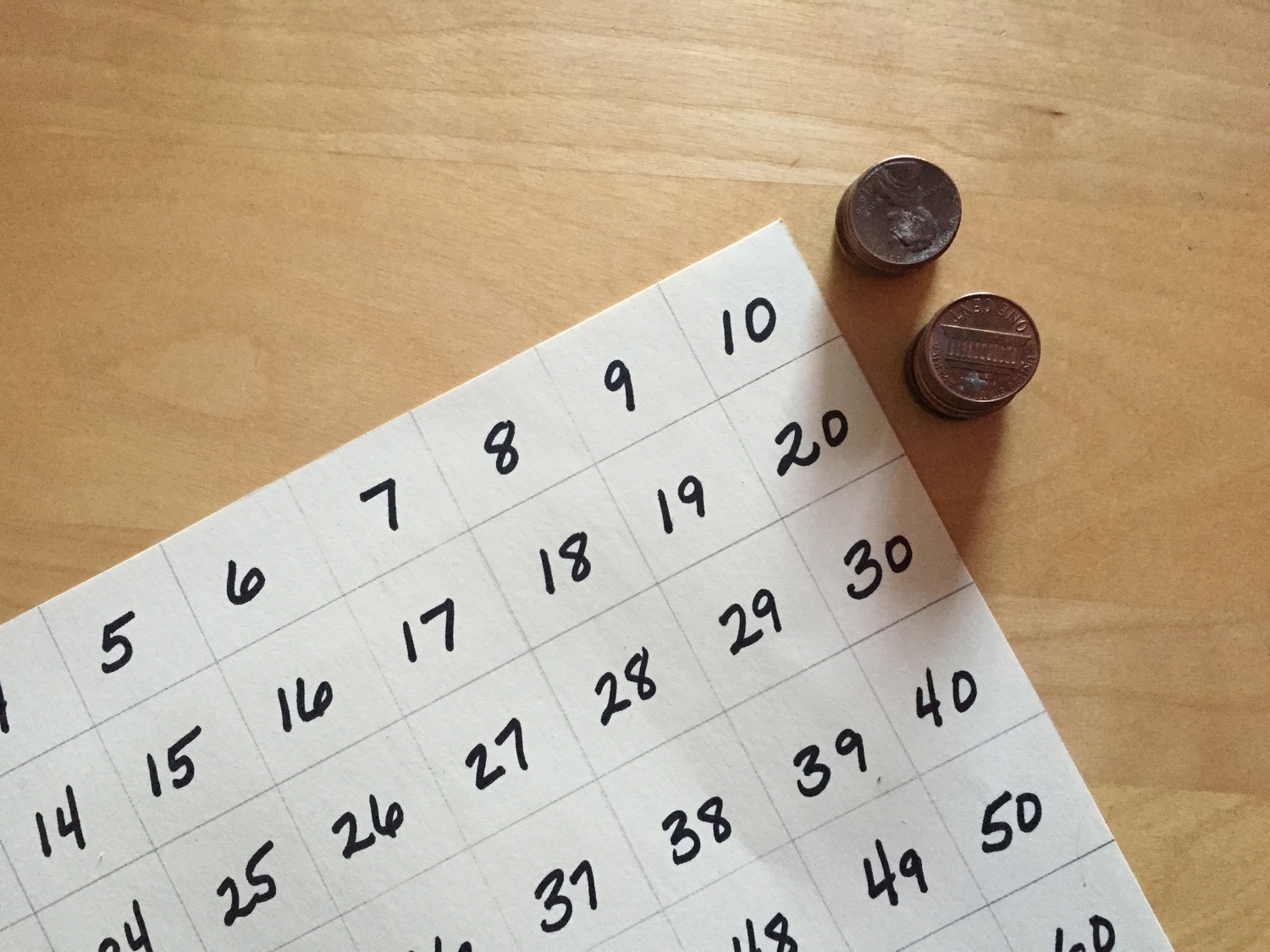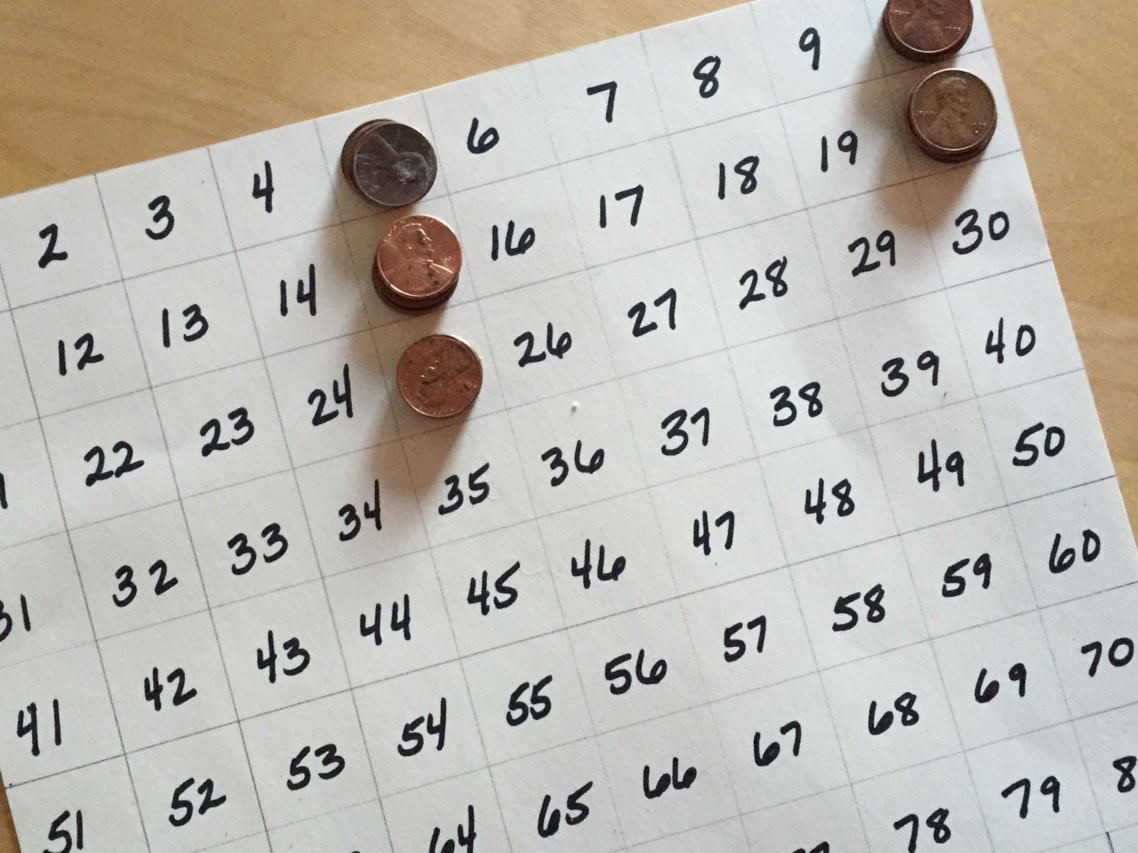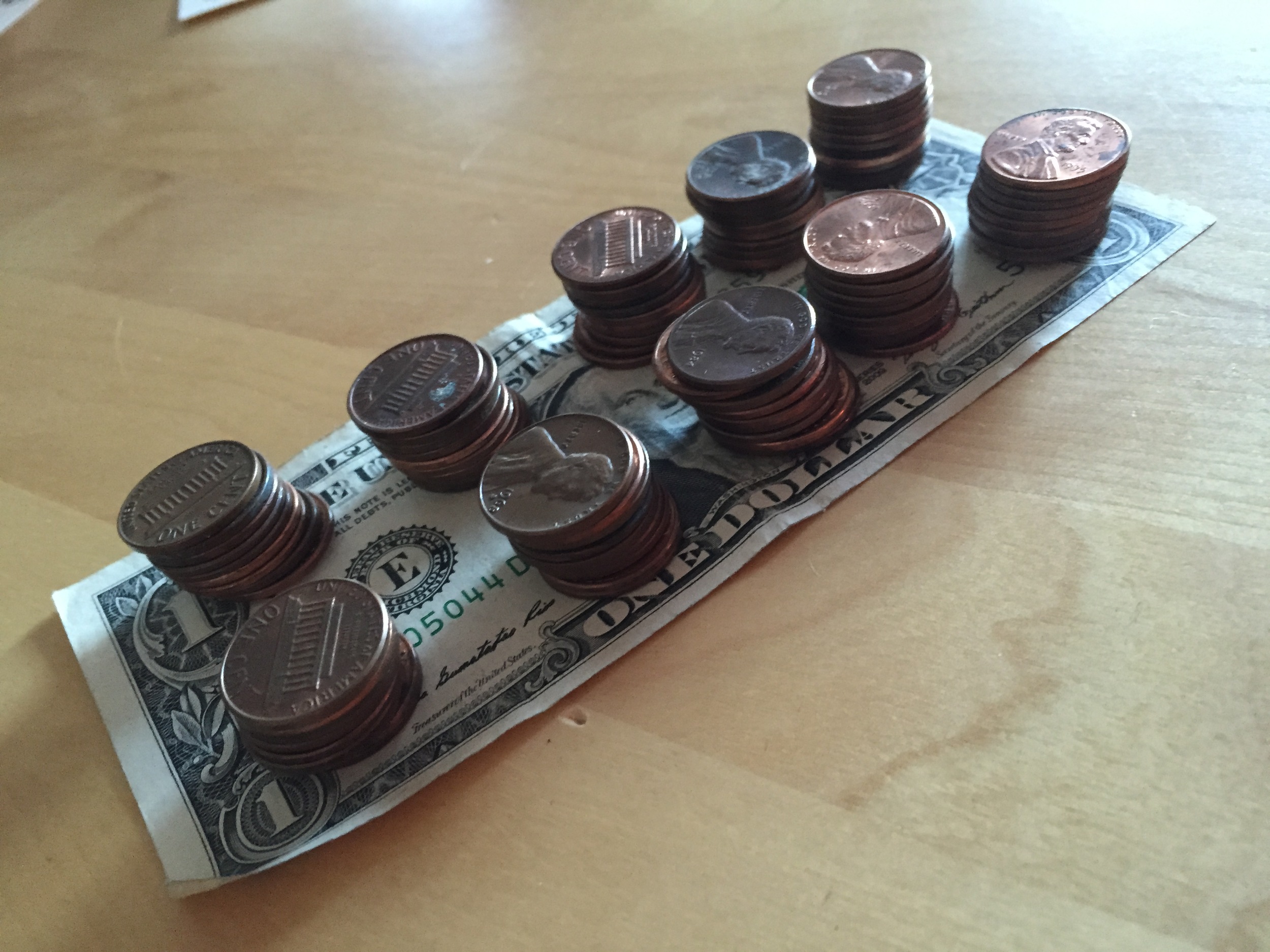Pennies from Heaven - Part 1
If you've got a couple dollars to spare, I've got a great multipurpose, real-life math manipulative for you, and you may not even need to leave your house to put it into action! At most, a quick trip to the bank should be all you'll need to do in preparation.
What You'll Need:
- One dollar bill
- 100 pennies
- Two penny rolls (many banks will give you these)
- A 10"x10" square of one-inch graph paper (can be purchased or made like this one from a piece of scrapbooking paper or tagboard)
Why You'll Want to Try This:
Developing math reasoning - understanding the "how" and "why" of mathematical concepts - is vital for children to become proficient in this area of study. Manipulatives are great for this, and real world, motivational manipulatives can enhance their effectiveness. With the exception of food, what better motivation is there than money?
So many different skills, from fine motor development and counting to fractional parts and decimal equivalency, can be taught or reinforced with these simple materials. In fact, the instructional possibilities of this $2.00 investment are so vast, I will be breaking them down into developmental and skill categories and posting on them here over time.
So, let's get started!
Beginning Number Concepts (preschool - 1st grade):
- Fine motor skills
- Writing numbers
- Stacking coins
- Filling penny wrappers with coins (this may be too challenging for many at this age)
- One-to-one correspondence, and counting to 100
- Number the graph paper from 1-100 (either you or the child - depending on age and ability).
- You may also cut another sheet of graph paper into 10 square strips, numbering them from 1-10 and using them to count out 10 pennies at a time. These strips can then be laid on top or beside the rows of the 1-100 sheet to break the skill down and/or show correspondence.
- Use the 100 square graph paper to count out pennies.
- Depending on the child's ability, you may start by counting to 10, 20, etc.
- As described above, you may use strips of 10 square paper to break this skill down.
- Show the child that one penny is equal to the numeral 1 and so on.
- Number the graph paper from 1-100 (either you or the child - depending on age and ability).
- Grouping - 2s, 3s, 5s, 10s, etc.
- Make stacks of pennies (5s, 10s, etc.) on top of the corresponding numeral on the graph paper.
- Use groupings to practice counting by 5s or 10s.
- Lay 10 pennies on numbered paper from 1-10.
- Slide pennies to the right and stack on the square marked 10
- As the child's ability dictates, continue on through each row 11-20, 21-30, etc.
- Gently move stacks to the right of the number and practice counting by 10s.
- Use the above method to practice counting by 2s, 3s, 5s, etc.
- Greater than/less than
- Using the terms "greater than" and "less than", compare the height of penny stacks.
- Compare the length of penny rows on the graph paper.
- Compare the value of different amounts of pennies (see below).
- Basic money concepts
- Introduce the term "cent" as equaling one penny.
- Place one penny on each square of the graph paper and discuss how 10 pennies equal 10 cents. Continue on through the rest of the 1-100 graph paper.
- Place 10 stacks of 10 pennies on the dollar, discussing how 100 pennies/cents equal one dollar.
- Introduce the term "tithe". Pull one penny from each stack or row of 10 to show what that looks like. Begin setting aside a tithe for Sunday's offering at church. Consider helping your child set up a savings program with the remaining money.
Next time, we'll take a look at some skills and activities applicable for the next level.










